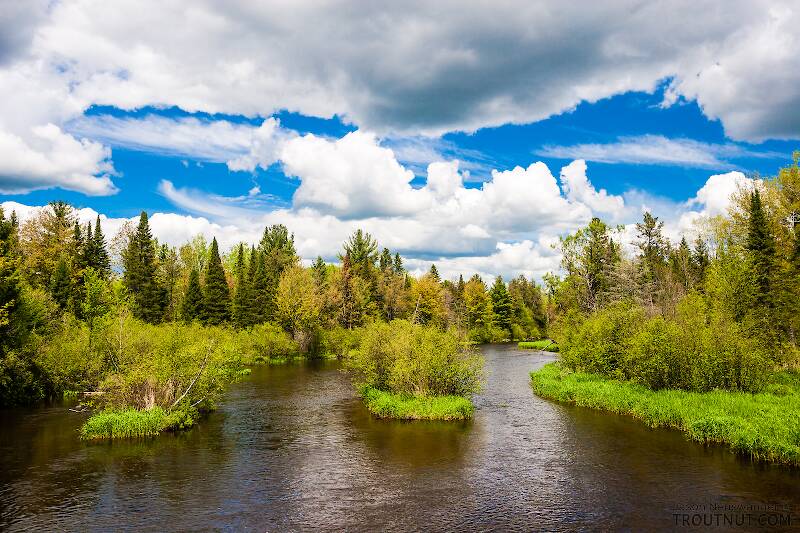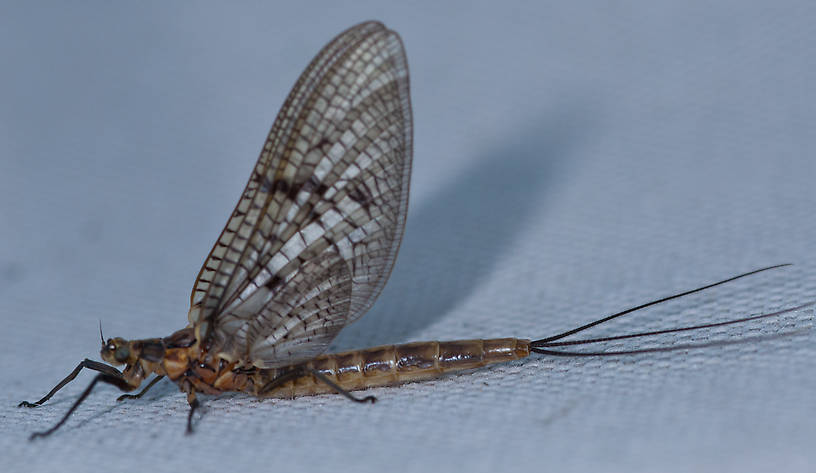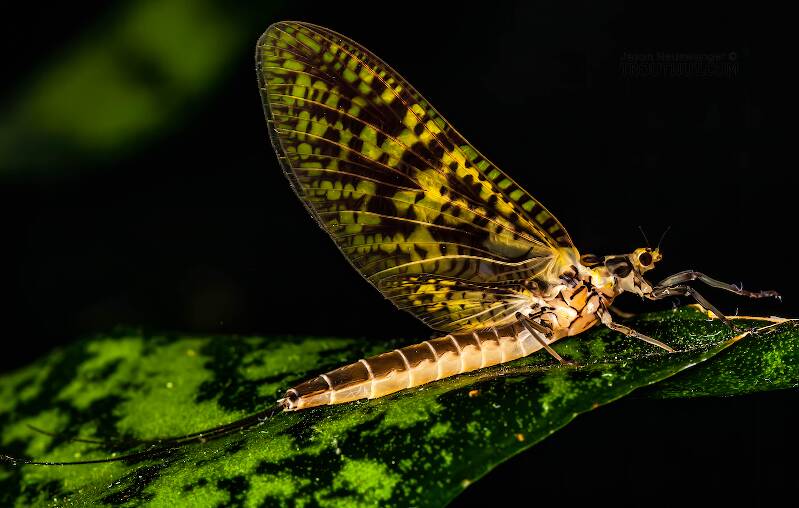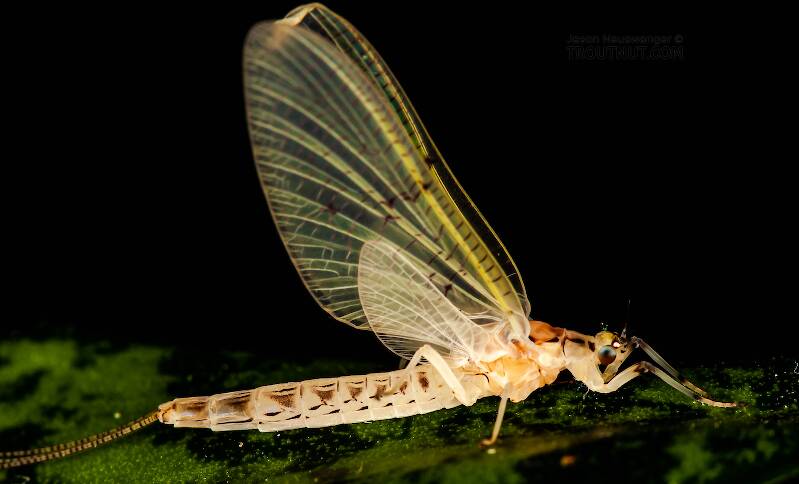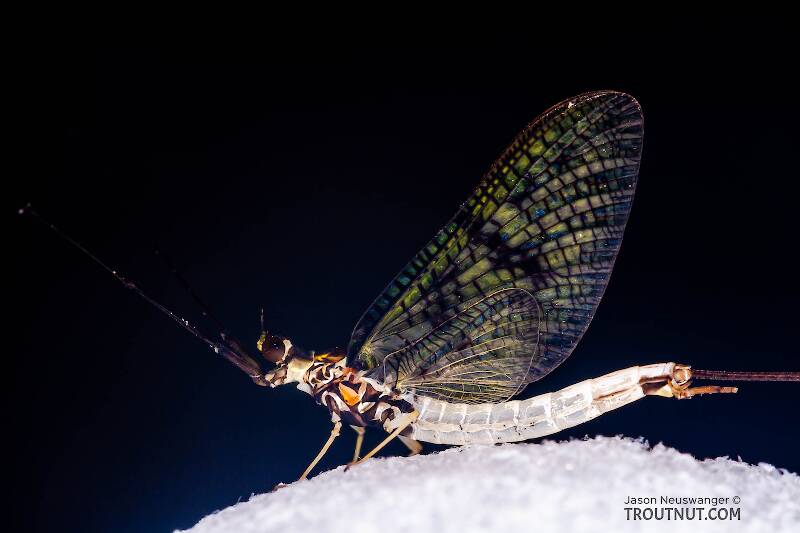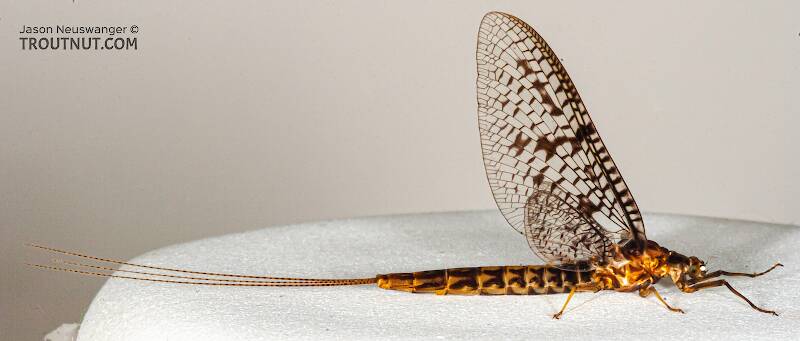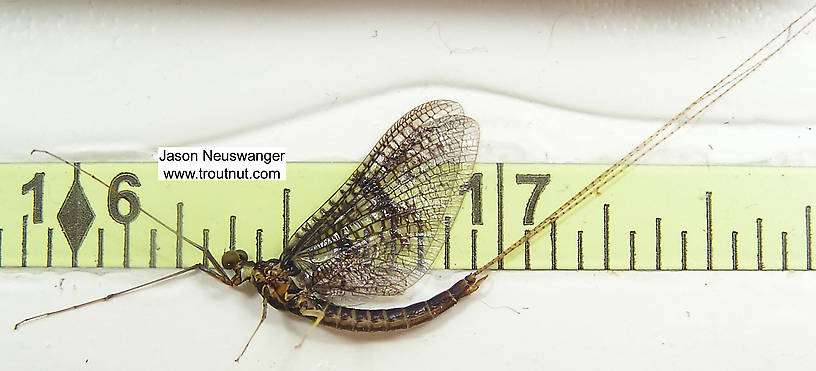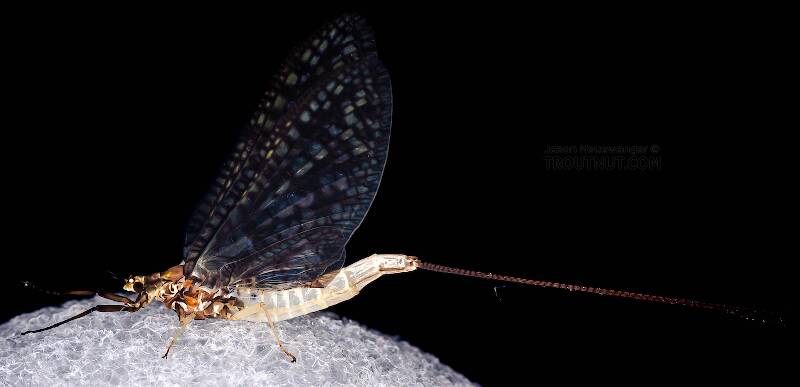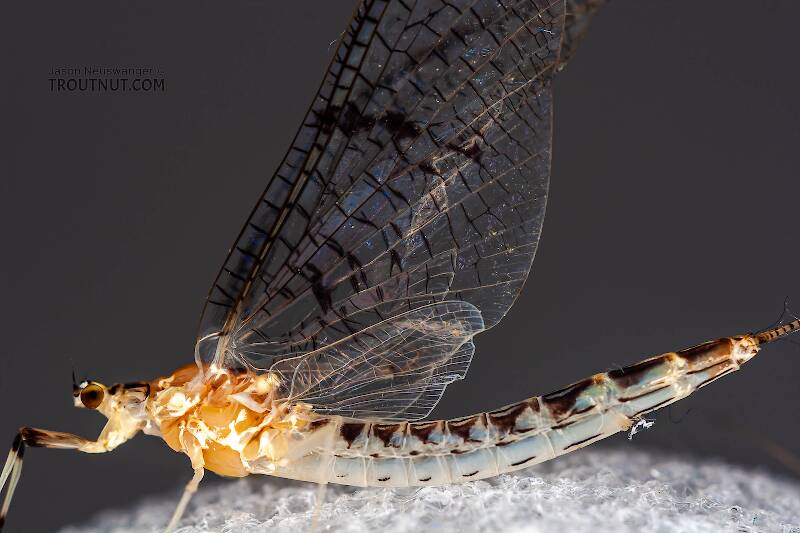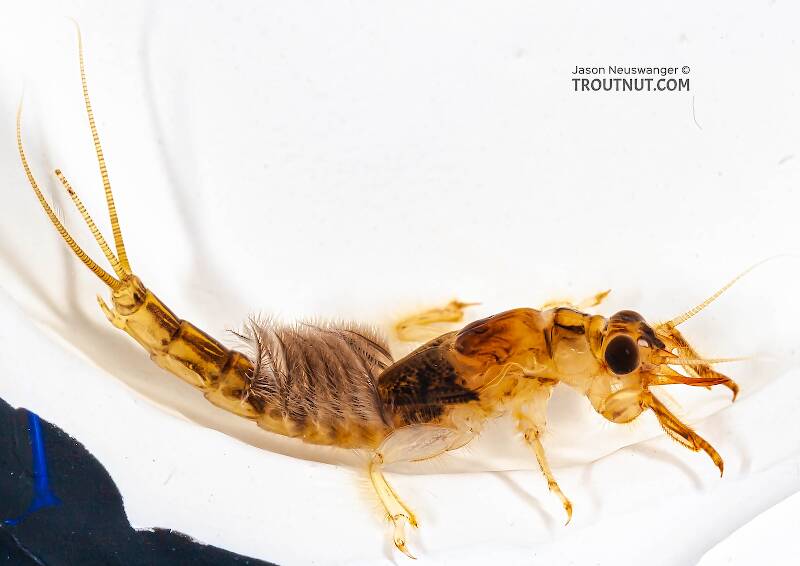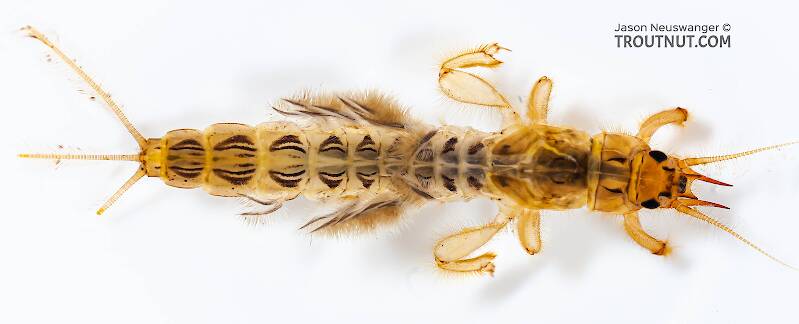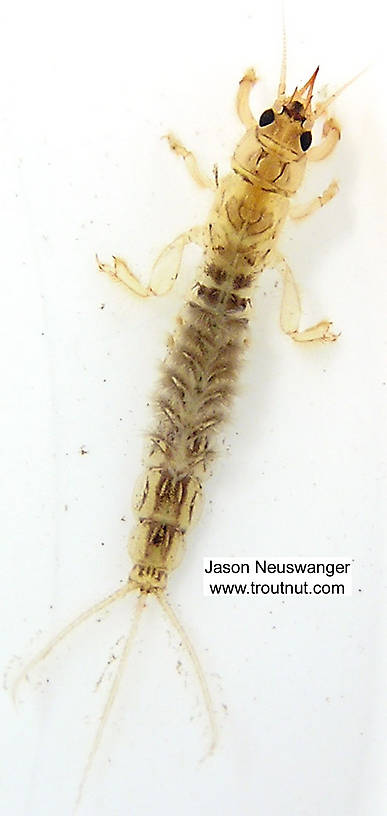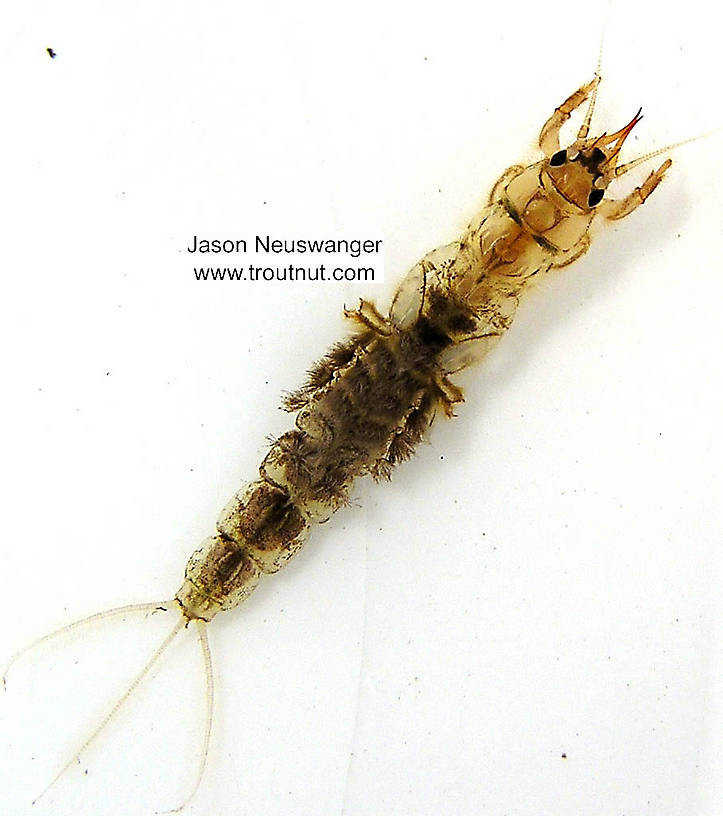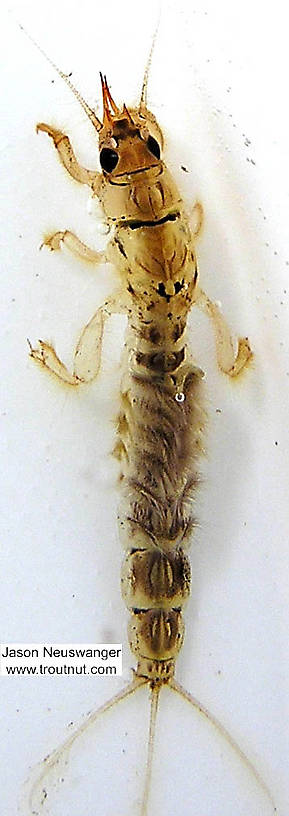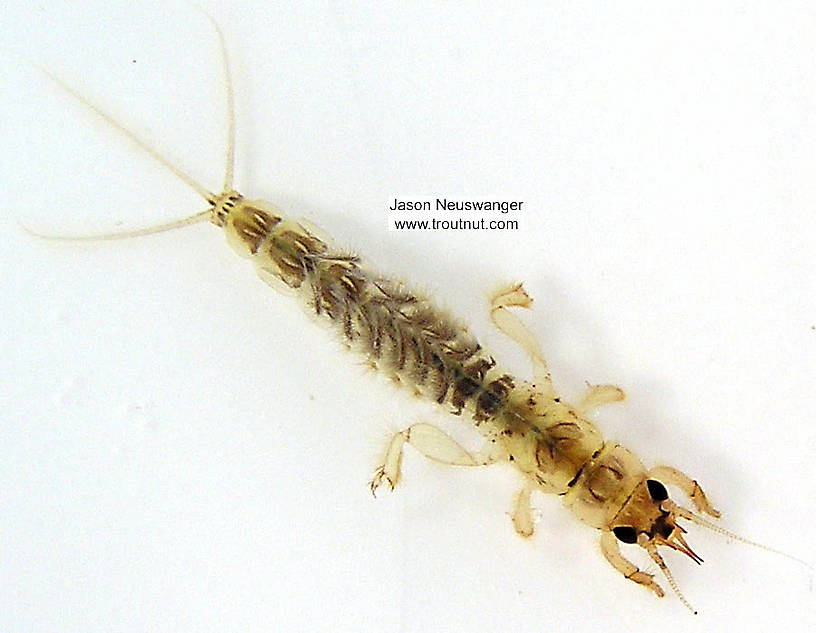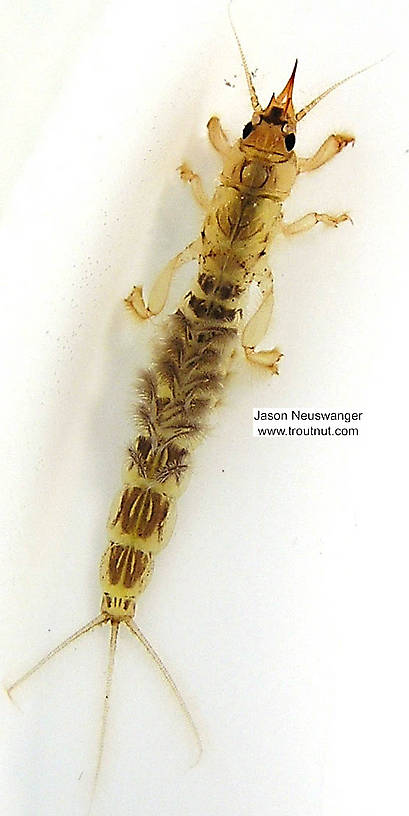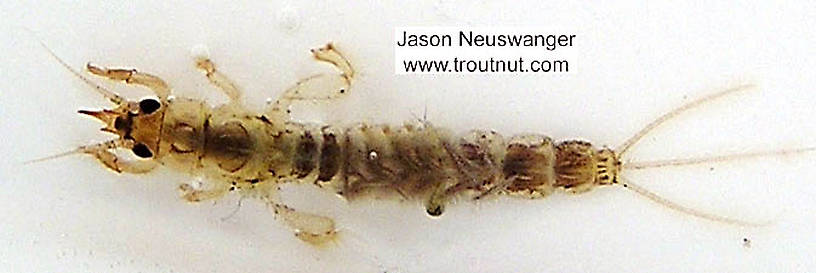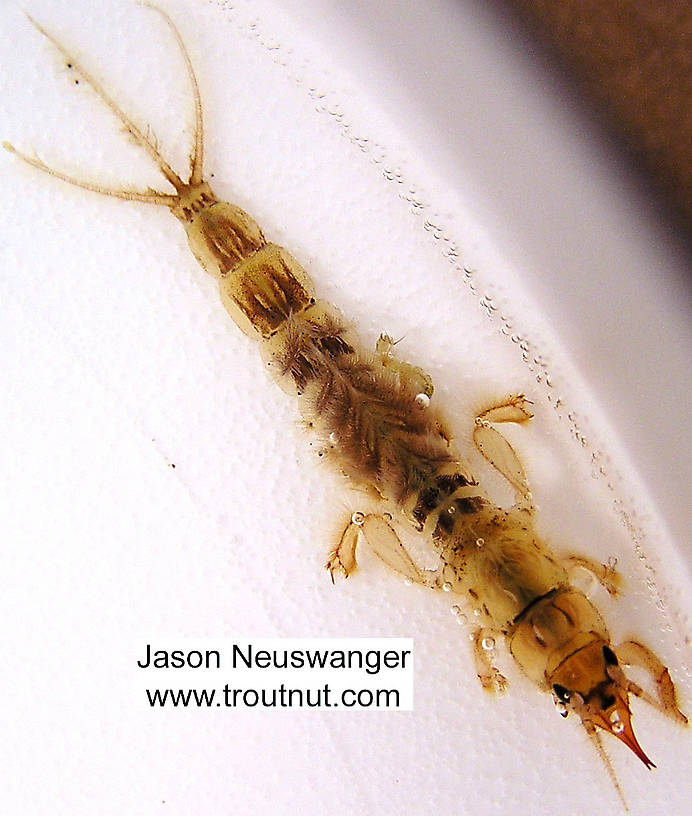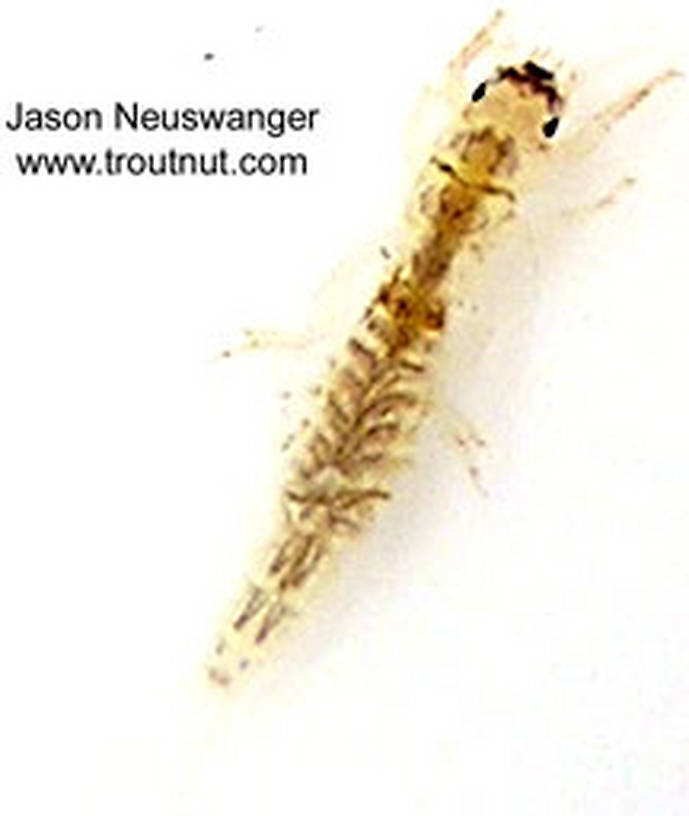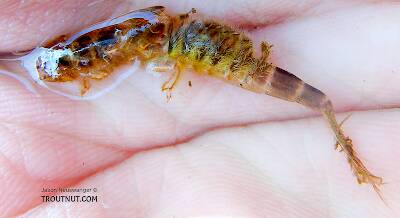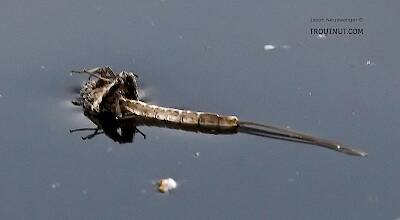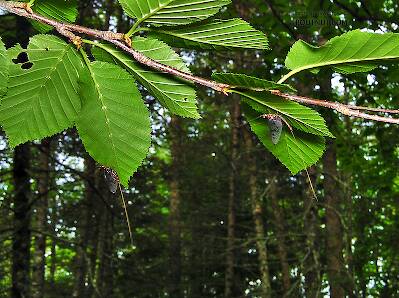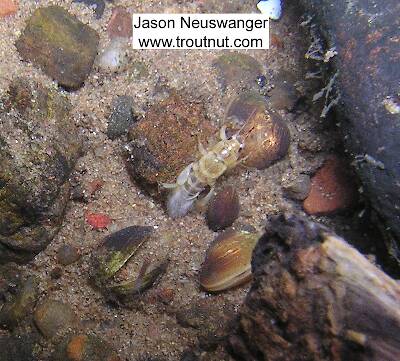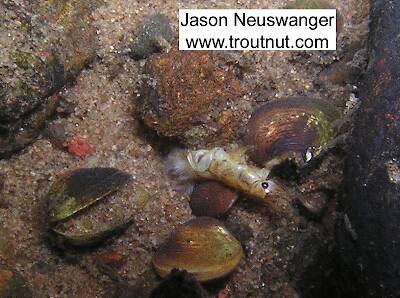
Salmonflies
Pteronarcys californica
The giant Salmonflies of the Western mountains are legendary for their proclivity to elicit consistent dry-fly action and ferocious strikes.
Featured on the forum

Troutnut is a project started in 2003 by salmonid ecologist Jason "Troutnut" Neuswanger to help anglers and
fly tyers unabashedly embrace the entomological side of the sport. Learn more about Troutnut or
support the project for an enhanced experience here.
Mayfly Genus Ephemera
This genus of large mayflies boasts three species of great importance. Ephemera simulans and Ephemera guttulata, the Brown Drakes and Green Drakes, are both legendary for short-lived periods of blizzard-like hatches. The Yellow Drakes, Ephemera varia, have a slow and steady emergence period, providing consistent low-key action for several midsummer weeks.
Ephemera blanda is a very localized species and unimportant to most anglers. Ephemera compar, sometimes mentioned in older books as a minor Western hatch, is now considered to be extinct.
Several important characteristics vary between the three important species. Read about each one for details.
Ephemera blanda is a very localized species and unimportant to most anglers. Ephemera compar, sometimes mentioned in older books as a minor Western hatch, is now considered to be extinct.
Several important characteristics vary between the three important species. Read about each one for details.
Genus Range
Nymph biology
Most Ephemera species burrow into rougher substrate than Hexagenia nymphs do. They inhabit sand and fine gravel more frequently than firm silt, although they are found in those environments too.Specimens of the Mayfly Genus Ephemera
1 Male Dun
2 Female Duns
3 Male Spinners
2 Female Spinners
13 Nymphs
3 Streamside Pictures of Ephemera Mayflies:
2 Underwater Pictures of Ephemera Mayflies:
Discussions of Ephemera
Green Drake Hatch Temp?
1 replies
Posted by NEMatt on May 23, 2014 in the species Ephemera guttulata
Last reply on May 23, 2014 by Entoman
GD Shuck
10 replies
Posted by Martinlf on May 29, 2013 in the species Ephemera guttulata
Last reply on Jun 2, 2013 by Crepuscular
Jason's photo of a GD shuck suggests that at hatch time the backs of the nymphs may be a greyish or grey olive color. Possibly useful information, if this is an accurate surmise.
Brown Drake?
20 replies
Posted by Derdmann on Jun 19, 2011 in the species Ephemera simulans
Last reply on Jun 29, 2011 by TNEAL
Came across a mayfly on the Paint River by Crystal Falls, Michigan on June 17th. Is it a brown drake?
Thanks.
Thanks.
Emergence period of green drakes
5 replies
Posted by Beardius on Aug 1, 2008 in the species Ephemera guttulata
Last reply on Dec 4, 2008 by Beardius
Emergence periods for green drakes usually run for 7-10 days in most streams. However, there are streams in the east where emergence periods are prolonged by some of the nymphs being parasitized by Nanocladius and Epoicocladius midge larvae. In these streams, emergence may be prolonged to 21 days. Unparasitized nymphs emerge before parasitized nymphs, with each group showing separate peaks of emergence about a week apart. This is based upon my own research on green drake emergence in streams with these midge species.
My question here is this: does anybody know of streams that have this type of prolonged emergence (2-3 weeks) in NY, PA, MD, or WV?
My question here is this: does anybody know of streams that have this type of prolonged emergence (2-3 weeks) in NY, PA, MD, or WV?
Green Drake Hatch Frustrations
7 replies
Posted by Billy on Jun 6, 2007 in the species Ephemera guttulata
Last reply on Jun 12, 2007 by GONZO
We were fortunate this past weekend to be on Pine Creek during the Green Drake hatch. The spinner fall was incredible. A question I have is why do we miss so many strikes and yet, using the same techniques, the ones we do catch and release practically hook themselves. We were getting strikes on Green Drake Duns and Cripples and Spinners.
One individual described it to us that after observing the trout underwater during a Green Drake hatch, many of the strikes pull a small part of the fly (wing, leg) underwater and they swirl and swallow it there. If that is true, then I can rationalize missing more than 18 fish this weekend. If anyone has observed this please post your observations. Normally we do not have such a great contrast in miss to hookup ratio.
One individual described it to us that after observing the trout underwater during a Green Drake hatch, many of the strikes pull a small part of the fly (wing, leg) underwater and they swirl and swallow it there. If that is true, then I can rationalize missing more than 18 fish this weekend. If anyone has observed this please post your observations. Normally we do not have such a great contrast in miss to hookup ratio.
Start a Discussion of Ephemera
References
- Arbona, Fred Jr. 1989. Mayflies, the Angler, and the Trout. Nick Lyons Books.
Mayfly Genus Ephemera
Taxonomy
Species in Ephemera
Ephemera blanda
0
0
Ephemera guttulataGreen Drakes
3
36
Ephemera simulansBrown Drakes
15
81
Ephemera variaYellow Drakes
3
17
1 species (Ephemera traverae) isn't included.

